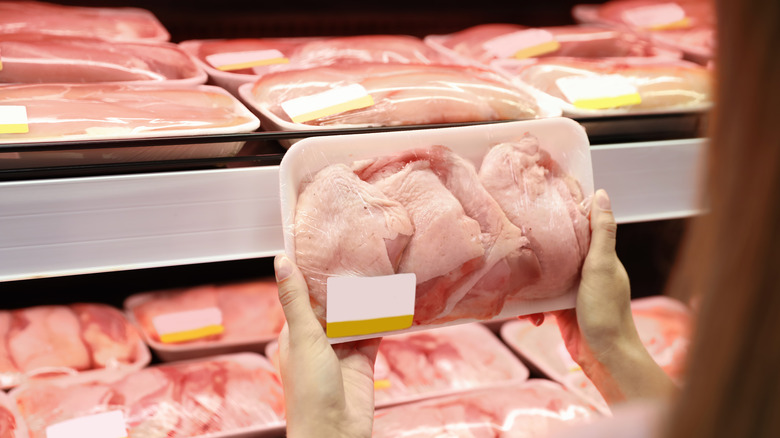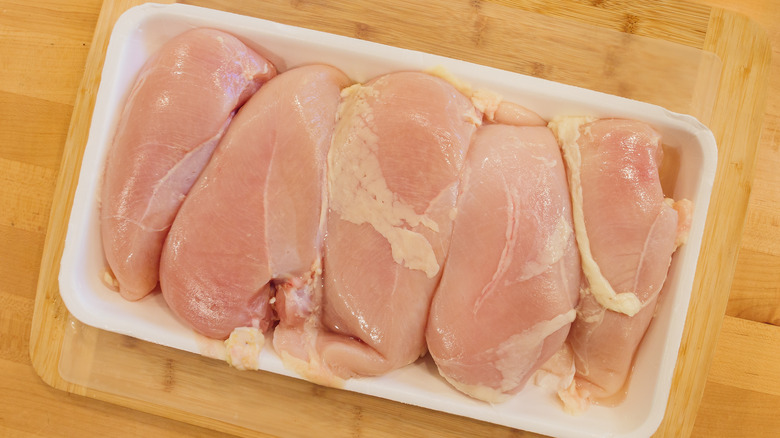Why The Inflation Of Chicken Prices May Have Come To An End
The retail value of chicken — or broiler meat, as they call it in the poultry industry — has been on a wild ride this year, sharing the brunt of rocky inflation tides with products like gas, wheat, and red meat. Chicken breasts have always had a relatively high price range due to their popularity among American home cooks, but even the humblest parts of the bird have had their time in the inflation spotlight in recent months.
After enjoying a long stretch of redeemed popularity sparked by pandemic food trends, many restaurants struggled to sell chicken wings this spring after the birds they were attached to suddenly started to break the bank. There were a few notable reasons restaurants were forced to jack up prices of the formerly frugal side dish: Chicken feed was expensive, there was an avian flu outbreak that killed 22 million birds, and unprecedented harsh winters were wiping out chicken farms in Texas. Luckily, it now looks like chicken might one of the few food products that might be finally getting a break from inflation.
A new chapter for chicken
According to a recent outlook report from the U.S. Department of Agriculture (USDA), the production of broiler meat (aka chicken) clocked in at nearly 4 million pounds in June 2022, which is "nearly level" with production in June 2021, before chicken shortages and inflation took off. Even more remarkable, the total expected meat production for 2022's second quarter is nearly 18 million pounds more than expected. With this in mind, the USDA predicts that overall 2022 production will reach 45.363 billion pounds, which is a hair higher than last year. As expected, breasts and wings are in the lead, with "other parts and forms" accounting for roughly 13.2 million pounds.
With production going up and demand going down (WCPO reports that many shoppers and large restaurants have started buying less expensive chicken products, like chicken tenders), prices are finally coming back down to earth. Wings are preparing for a safe landing in their original camp, and breast meat prices on average fell from 352.1 cents per pound in May to 282.4 cents per pound in July. "Prices for whole birds and some chicken parts are already starting to cool, and these prices are not expected to stay as high next year," claims the USDA report. Let's hope that the supply and demand of broiler meat stays on this track in 2023.

